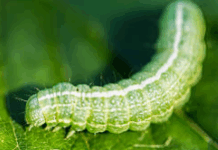For gardeners or those that enjoy the outdoors, spring fever is one thing, but itching rashes and painful blisters are another thing entirely. Poisonous plants can turn a wonderful pastime into an unfortunate experience. A working knowledge of common poisonous plants is the best defense against an itchy outcome.
“Poison ivy (Toxicodendron radicans) and poison oak (Toxicodendron pubescens) are the most commonly encountered poisonous plants in the area that can result in skin irritation/allergic reaction,” said Nancy Loewenstein, an Alabama Cooperative Extension System forestry and wildlife specialist.
Other poisonous plants that may be found in Alabama are stinging nettles (Urtica sp.) and spurge nettle or tread softly (Cnidoscolus stimulosus). These plants have stinging hairs that can also cause painful reactions.
Identifying These Plants is Important
The ability to identify poisonous plants when you are outdoors will help prevent a dreadful experience. It is also important to recognize look-a-like plants, as many grow in similar conditions.
For gardeners or those that enjoy the outdoors, spring fever is one thing, but itching rashes and painful blisters are another thing entirely. Poisonous plants can turn a wonderful pastime into an unfortunate experience. A working knowledge of common poisonous plants is the best defense against an itchy outcome.
“Poison ivy (Toxicodendron radicans) and poison oak (Toxicodendron pubescens) are the most commonly encountered poisonous plants in the area that can result in skin irritation/allergic reaction,” said Nancy Loewenstein, an Alabama Cooperative Extension System forestry and wildlife specialist.
Other poisonous plants that may be found in Alabama are stinging nettles (Urtica sp.) and spurge nettle or tread softly (Cnidoscolus stimulosus). These plants have stinging hairs that can also cause painful reactions.
Identifying These Plants is Important
The ability to identify poisonous plants when you are outdoors will help prevent a dreadful experience. It is also important to recognize look-a-like plants, as many grow in similar conditions.




